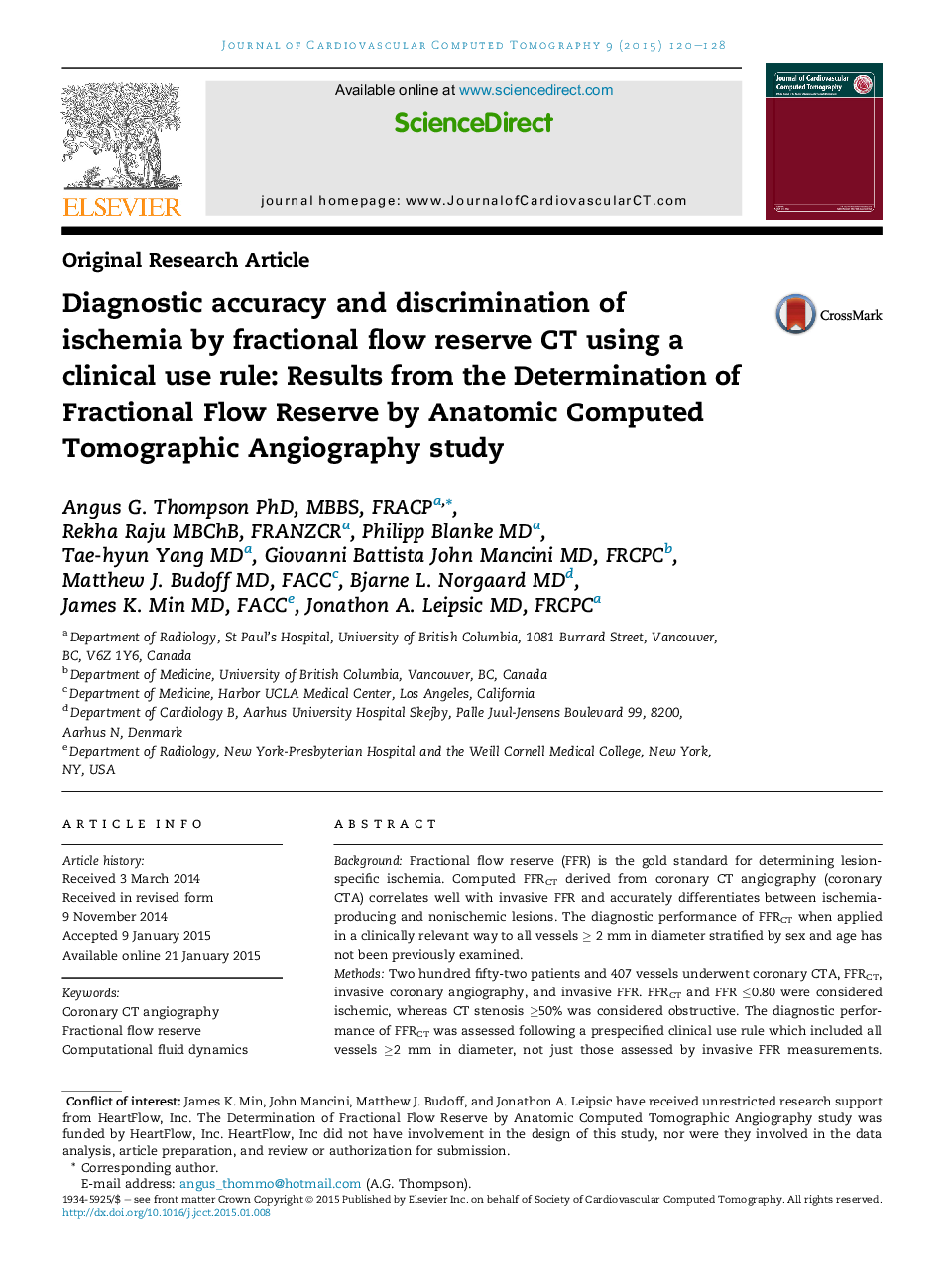| کد مقاله | کد نشریه | سال انتشار | مقاله انگلیسی | نسخه تمام متن |
|---|---|---|---|---|
| 5985019 | 1178702 | 2015 | 9 صفحه PDF | دانلود رایگان |
- Fractional flow reserve from cardiac CT is a novel method for analysing coronary lesions.
- FFRCT significantly improves diagnostic accuracy and for patients with coronary stenosis.
- To date, the impact of vessel size on the diagnostic accuracy of FFRCT is unknown.
- These results may identify those patients likely to benefit from revascularization.
- We have further assessed diagnostic performance stratified by age and sex.
BackgroundFractional flow reserve (FFR) is the gold standard for determining lesion-specific ischemia. Computed FFRCT derived from coronary CT angiography (coronary CTA) correlates well with invasive FFR and accurately differentiates between ischemia-producing and nonischemic lesions. The diagnostic performance of FFRCT when applied in a clinically relevant way to all vessels ⥠2 mm in diameter stratified by sex and age has not been previously examined.MethodsTwo hundred fifty-two patients and 407 vessels underwent coronary CTA, FFRCT, invasive coronary angiography, and invasive FFR. FFRCT and FFR â¤0.80 were considered ischemic, whereas CT stenosis â¥50% was considered obstructive. The diagnostic performance of FFRCT was assessed following a prespecified clinical use rule which included all vessels â¥2 mm in diameter, not just those assessed by invasive FFR measurements. Stenoses <30% were assigned an FFR of 0.90, and stenoses >90% were assigned an FFR of 0.50. Diagnostic performance of FFRCT was stratified by vessel diameter, sex, and age.ResultsBy FFR, ischemia was identified in 129 of 252 patients (51%) and in 151 of 407 vessels (31%). Mean age (±standard deviation) was 62.9 ± 9 years, and women were older (65.5 vs 61.9 years; P = .003). Per-patient diagnostic accuracy (83% vs 72%; P < .005) and specificity (54% vs 82%, P < .001) improved significantly after application of the clinical use tool. These were significantly improved over standard coronary CTA values before application of the clinical use rule. Discriminatory power of FFRCT also increased compared with baseline (area under the receiver operating characteristics curve [AUC]: 0.93 vs 0.81, P < .001). Diagnostic performance improved in both sexes with no significant differences between the sexes (AUC: 0.93 vs 0.90, P = .43). There were no differences in the discrimination of FFRCT after application of the clinical use rule when stratified by age â¥65 or <65 years (AUC: 0.95 vs 0.90, P = .10).ConclusionsThe diagnostic accuracy and discriminatory power of FFRCT improve significantly after the application of a clinical use rule which includes all clinically relevant vessels >2 mm in diameter. FFRCT has similar diagnostic accuracy and discriminatory power for ischemia detection in men and women irrespective of age using a cut point of 65 years.
Journal: Journal of Cardiovascular Computed Tomography - Volume 9, Issue 2, MarchâApril 2015, Pages 120-128
